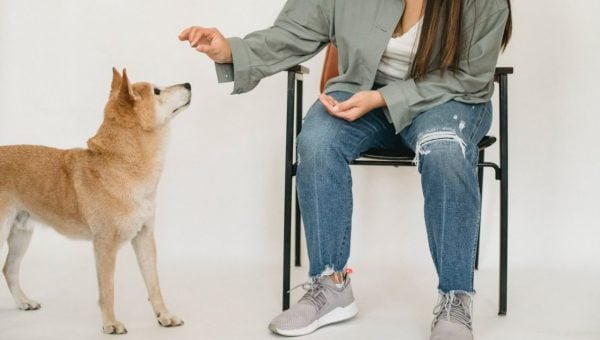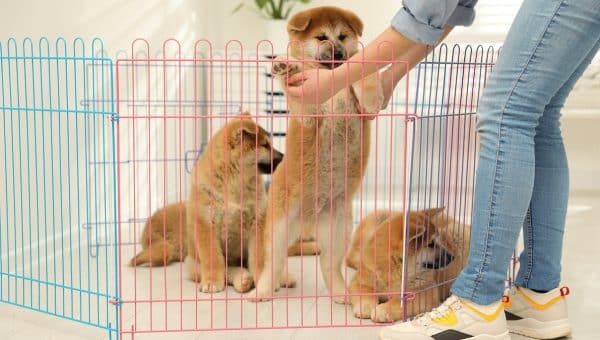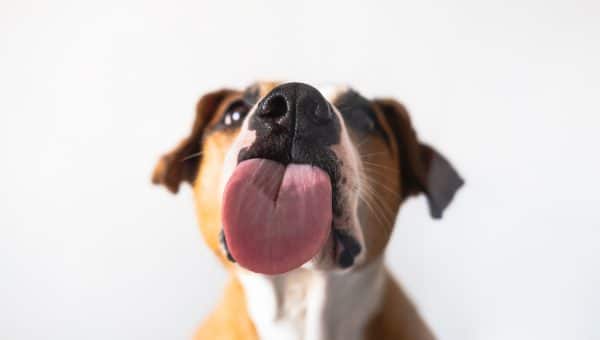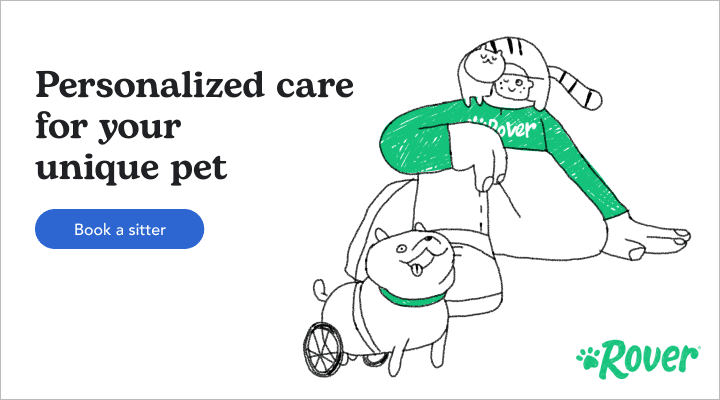- This review contains affiliate links. Read more here.
Getting a new puppy is exciting, but it also comes with a lot of changes to your routine. Your work schedule and social life will have to flex around your puppy’s potty and exercise needs. Fortunately, leaving a puppy alone does get easier as they get older. Which is why an early, positive start to this experience is important.
When your puppy is around 3 months (12 weeks) of age, they can handle being alone for up to 30 minutes. Once your puppy hits three months, they can be left alone for an hour without having a potty accident.
Ultimately, how long you can leave a puppy alone depends on:
- their age
- potty schedule
- fulfillment of food, exercise & enrichment needs
- number of environmental distractions
- how comfortable their space is
Be patience with this process. Being able to leave your dog alone for more than a few hours, in or out of a crate, can take anywhere from one to six months—and the earlier you start leaving your pup home alone, the better. Read on for helpful steps on how to get your puppy used to being alone.
How Long Can a Puppy Be Alone?
Based on conversations with trainers, vets, and other pet parents, we recommend estimating the time your puppy can be alone based on their age and pee needs. See our guideline below for leaving a puppy alone:
- 8–10 weeks: Less than 30 minutes.
- 10–12 weeks: 30 mins to one hour, or less if your puppy is in their fear period.
- 3–6 months: Use the one hour per month rule.
- After 6 months: Up to six hours and no longer than eight.
If you are leaving your puppy alone for the first time, don’t leave the house. You only leave the room to see how they react and cope. Experts recommend waiting to the three month mark before leaving your puppy alone in the house.
How to Train Your Puppy to Enjoy Being Alone
1. Create a safe zone for your puppy
Choose a secure area of your home, whether it’s the entire living room, a bedroom, or a small portion of the kitchen sectioned off. Here’s what you’ll need:
- A crate (if you’re crate training) or pet gate
- Cozy items like blankets or your old shirts. Your scent can provide comfort to your puppy.
- A dog bed, like this orthopedic pet mattress. Or, you may need a chew-proof bed.
- Potty pads. Our rundown on house training with puppy pads covers the basics.
- Plenty of safe puppy toys and chews. Monitor your puppy before leaving them alone with toys as puppy are prone to destructive chewing and swallowing out of curiosity.
2. Play white noise or dog TV
White noise machine, especially if you live in a city or apartment, can help reduce alarm barking or sudden pacing. You can also turn the TV on for your dog to help them feel less alone.
3. Feed, exercise, and play with your dog before leaving them
Puppies and young dogs need more enrichment than adults. Without it, they may become bored, and even destructive, when left alone. Enrichment can be a training session, an exciting neighborhood walk, a puzzle feeder, or a round of indoor games.
In fact, leaving your puppy alone without tiring them out can be a recipe for disaster. A hungry or bored puppy will look to fulfill their own needs when alone.
4. Slowly ease into longer periods
Whether in the crate or out, the amount of time your puppy spends alone should be like a rollercoaster. The first time you leave a puppy alone, it may only be 5 minutes. When they are comfortable, or don’t even notice that you’re gone, you can then escalate to 10 or 15 minutes. If they seem to panic, try again with less time apart.
You can also use these sessions to test what toys, treats, and chews your dog can safely interact with. Keep these toys and treats for only when you are gone so they feel special. Puppies acclimate better when alone time is full of fun and relaxation.
Pro-tip: The jury is still out on how your hellos and goodbyes affect your puppy as it depends on your dog. Some will benefit from calm departures while others can settle easily and enjoy being expressive when you return. It’s best to talk to a trainer if you find yourself unsure.
5. Book dog drop-in services
While it is okay to leave a puppy in a crate during work hours, you still need to have a plan for letting them out. Remember, just because your dog can hold their urine doesn’t mean they should, especially if they are still potty training.
If you’re unable to get home to your pet, consider:
- Asking your neighbor for help.
- Hire a dog walker. If your puppy has their vaccinations, a walker who takes them on a decompression walk can be a good way to get excess energy and poop out.
- Book drop-in care. Drop-in care works well for puppies who tend to get more excited by walks, or don’t have loose leash skills. Alert your sitter of your dogs’ pre-crate routine for continued success.
- Try out doggy day-care. Whether you find day care through a licensed person’s home or a local business, be sure to ask about the number of dogs present each day. The number of dogs can influence whether your dog is having a good time.
Does Breed Type Impact Alone Time?
Not always. Environment plays a huge role as well. But breed genetics can speak to why some puppies are quicker to adapt than others.
Certain breeds, such as Shiba Inus and Malteses, acclimate quickly to being alone due to their independent nature. High energy breeds, such as Border Collies, Golden Retrievers, and Huskies, may require exercise before being alone.
Then there are dogs who are bred to be social and part of the family, such as German Shepherds and Samoyeds. These dogs often need a slower, trainer-informed approach to learn how to be alone.
Risks of Leaving a Puppy Alone for Too Long or Often
Dogs are social animals and need daily enrichment. When a puppy is left alone before they’re ready or end up spending too much time confined in a cafe, you may see behavioral problems arise, such as:
- separation anxiety
- training relapse, especially with potty training
- destructive behaviors
- choking on toys or chews
- barking
- neighborhood complaints
Pro-tip: Get a pet camera to monitor your dog’s behaviors when you are alone. Recordings are useful for when you need to playback the moment to see what might have triggered an undesirable behavior.
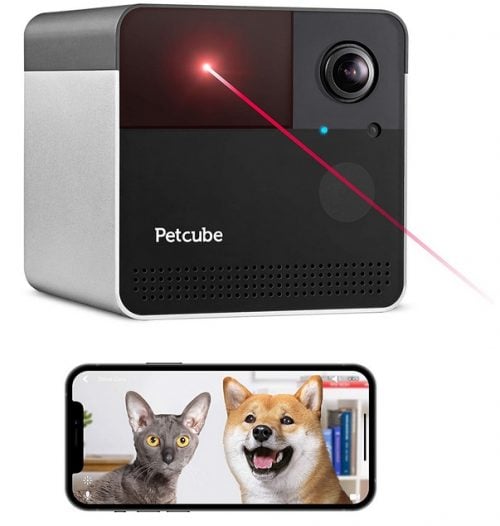
Petcube
This WiFi camera allows you to keep an eye on your puppy from afar and even speak to him with two-way audio.
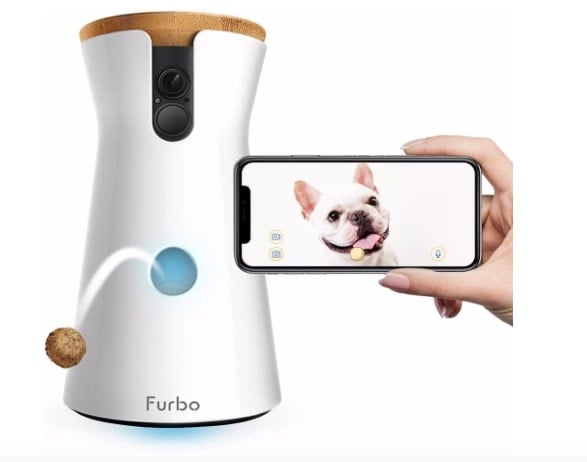
Furbo
Two-way audio, night vision, and a treat tosser help keep you and your puppy connected when you’re away from home.
Leaving a Puppy Alone Is Hard But Worthwhile Work
In the first six months of life, puppies need a lot of attention, care, and exercise. Do not leave puppies younger than three months alone for more than 1-2 hours. They may feel strongly and have a negative association with being by themselves.
If you do notice anxiety, reduce the time they are left alone until they relax again. You should start to see progress at six months of age when your puppies can be comfortable alone.
Keep in mind, however, if your puppy is overly lonely, hungry, or bored, they may start destroying or barking excessively. Crate training helps, as does creating a “puppy zone,” but it’s not a full-proof tactic. Getting your puppy used to being alone requires a multi-pronged approach.
If you’re not able to give your dog a break, consider a dog sitter or in-home doggie daycare. These services can keep your puppy active while you’re away, reducing your stress about leaving them alone. Because we know you don’t want to leave your puppy alone—who would? But for your puppy’s sake, practice alone time early so you don’t have to worry in the future.

